45 label each part of the atp molecule illustrated below.
What are three parts of an ATP molecule? | Socratic Explanation: ATP molecules are used by all living organism as energy to carry out life functions. Also notable, ATP stands for Adenosine Triphosphate. This molecule is composed of three parts: Adenine. Ribose. Three Phosphate Groups. Here is a picture: A&p test 2 Flashcards | Quizlet -Pyruvic acid, lactic acid, 2 ATP -Pyruvic acid, 4 ATP -6CO2, 6H2O, 2 ATP 6CO2,6H20,32 ATP Exocrine glands can be further classified into------ glands, which are composed of a single epithelial cell, and----- glands, that are composed of many cells. unicellular, multicellular Extracellular matrix consist of lacunae and lamellae heparin and keratin
PDF Answer Key. Photosynthesis and Respiration - Grosse Pointe Public ... 13. In the Model 2 place a green star by each process (A, B, C, or D) that represents photo- synthesis, and a red star by each process (A, B, C, or D) that represents cellular respiration. Write and label equations for cellular respiration and photosynthesis below. Circle the carbon dioxide in each. If you need help, see Model l. 7 + cop 15.

Label each part of the atp molecule illustrated below.
ATP cycle and reaction coupling | Energy (article) | Khan Academy Adenosine triphosphate, or ATP, is a small, relatively simple molecule. It can be thought of as the main energy currency of cells, much as money is the main economic currency of human societies. The energy released by hydrolysis (breakdown) of ATP is used to power many energy-requiring cellular reactions. Image credit: OpenStax Biology. Cellular Respiration Equation, Types, Stages, Products & Diagrams Cellular Respiration Equation: Every machine needs specific parts and fuel in order to function. Likewise, "biological machines" also require well engineered parts and good energy source in order to work.Perhaps the second most important molecule (DNA is the first) is adenosine triphosphate (also known as ATP).Basically, ATP serves as the main energy currency of the cell. PDF SCIENCE WITH MR. HAUG - Mr. Haug's Page How is ATP different from ADP? 5. Label each part of the ATP molecule illustrated below. P P p 6. When a cell has energy available, how can it store small amounts of that energy? Name Class Da te 7. When is the energy stored in ATP released? 8. For what purpose do the characteristics of ATP make it exceptionally useful to all types of cells? 9.
Label each part of the atp molecule illustrated below.. PDF Chapter 8 Photosynthesis, SE - Loudoun County Public Schools Label each part of the ATP molecule illustrated below. Type Description Examples Organisms that make their own food Organisms that obtain energy from the food they eat P P P 6. When a cell has energy available, how can it store small amounts of that energy? 7. When is the energy stored in ATP released? TYPES OF ORGANISMS © Pearson Education, Inc. 4.1 Chemical Energy and ATP Flashcards | Quizlet What do the number of ATP molecules produced depend on? the type of molecule that is broken down which are carbohydrates,lipids, or proteins The breakdown of simple sugar glucose yields how many molecules of ATP? 36 What molecule is most commonly broken down to make ATP? carbohydrates How much energy does cabohydrates store? 4 calories per mg PDF TYPES OF ORGANISMS Type Description Examples What are two ways in which cells use the energy provided by ATP? a. b. Using Biochemical Energy (pages 202-203) 10. Why is it efficient for cells to keep only a small supply of ATP on hand? 11. Circle the letter of where cells get the energy to regenerate ATP. a. ADP b. phosphates c. foods like glucose d. organelles atp molecule labeled - davincifireplace Label each part of the atp molecule illustrated below. In the yeast Schizosaccharomyces pombe the FANCM-family DNA helicase FmI1 directs NCO recombination formation during meiosis. u Based on these helicase motifs, a number of helicase superfamilies have been distinguished. In: Spies, M.
PDF 4.1 Chemical Energy and ATP - Murrieta Valley Unified School District -up to 36 ATP from one glucose molecule adenosine triphosphate adenosine diphosphate tri=3 di=2 . 4.1 Chemical Energy and ATP • Fats store the most energy. -80 percent of the energy in your body -about 146 ATP from a triglyceride • Proteins are least likely to be broken down to make ATP. SOLVED:VISUAL SKILLS This computer model shows the four parts of ATP ... VISUAL SKILLS This computer model shows the four parts of ATP synthase, each part consisting of a number of polypeptidelsubunits (the structure in gray is still an area of active research. Using Figure 9.14 as a guide, label the rotor, stator, internal rod, and catalytic knob of this molecular motor. PDF ATP - lcps.org ATP (How do cells capture, release and store energy?) Why? Model 1: The Structure of Adenosine Tri-Phosphate (ATP) 1. List the three parts of the ATP molecule and label each on the simplified molecule below. a. b. c. 2. Describe how you would be able to identify each part of the ATP molecule. Give yourself clues to identify each component. a. b. c. DOC 013368718X_CH08_115-128.indd (ATP). Ribose is a 5-carbon sugar molecule that is part of an ATP molecule. The phosphate groups of ATP are the key to its ability to store and supply energy. ATP releases energy when it breaks bonds between its phosphate groups. Most cells only store enough ATP for a few seconds of activity.
DOC Bio07_TR_U03_CH08.QXD - Pearson Education Label each part of the ATP molecule illustrated below. 6. When a cell has energy available, how can it store small amounts of that energy? © Pearson Education, Inc., publishing as Pearson Prentice Hall. 63 Name Class Date 7. When is the energy stored in ATP released? 8. PDF Chapter 8 Photosynthesis, TE - Scarsdale Public Schools Chemical Energy and ATP(pages 202-203) 3. What is one of the principal chemical compounds that living things use to store energy? Adenosine triphosphate, or ATP 4. How is ATP different from ADP? ATP has three phosphate groups, while ADP has two phosphate groups. 5. Label each part of the ATP molecule illustrated below. Type Description Examples Adenosine Triphosphate (ATP) - Definition, Structure and Function Adenosine triphosphate, also known as ATP, is a molecule that carries energy within cells. It is the main energy currency of the cell, and it is an end product of the processes of photophosphorylation (adding a phosphate group to a molecule using energy from light), cellular respiration, and fermentation. All living things use ATP. PDF Section 8-1 Energy and Life - dps61.org 5. Label each part of the ATP molecule illustrated below. Type Description Examples Autotrophs Organisms that make their own food Plants Heterotrophs Organisms that obtain energy from Animals, mushrooms the food they eat Adenine Ribose 3 Phosphate groups P P P 6. When a cell has energy available, how can it store small amounts of that energy?
2017-2018 - Science with Mrs. Floria - Google Below is the structural Formula for ATP (from Wikipedia). Notice the three phosphate molecules on the left. ... Be able to label each part of the ATP molecule illustrated below. 6. ... You must label the lungs, oral cavity, nasal cavity, larynx, trachea, bronchus, bronchioles, and diaphragm. (You may use the diagram below for help)
PDF Section 8-1 Energy and Life (pages 201-203) - Mystr Nakashima Organisms that make their own food Organisms that obtain energy from the food they eat P P P TYPES OF ORGANISMS Chemical Energy and ATP(page 202) 3. What is one of the principal chemical compounds that cells use to store energy? 4. How is ATP different from ADP? 5. Label each part of the ATP molecule illustrated below. 6.
PDF Chapter 8 Photosynthesis Section 8-1 Energy and Life (pages 201-203) Organisms that make their own food Organisms that obtain energy from the food they eat P P P TYPES OF ORGANISMS Chemical Energy and ATP(page 202) 3. What is one of the principal chemical compounds that cells use to store energy? 4. How is ATP different from ADP? 5. Label each part of the ATP molecule illustrated below. 6.
ATP BIS 2C.pdf - CONSERVATION OF ENERGY IN ATP By the end... - Course Hero ATP is a nucleotide composed of three general parts: a nitrogenous base, a sugar and three phosphate groups. a. Label the three parts of the nucleotide below. b. Draw an arrow to the two phosphoanhydride bonds in the ATP molecule. c. Write a balanced equation for the hydrolysis of one of the phosphoanhydride bonds in the ATP, indicate all ...
ATP-Student - ATP - ©HSPI - The POGIL Project Limited Use by Permission ... ATP atp (how do cells capture, release and store energy?) why? sporting goods store might accept bill for the purchase of bicycle, but the corner store will not
PDF Scarsdale Public Schools / Overview Label each part of the ATP molecule illustrated below. Adenine Ribose 3 Phosphate groups p p 6. When a cell has energy available, how can it store small amounts of that energy? It can add a phosphate group to ADP molecules, producing ATP molecules. 7. When is the energy stored in ATP released?
Solved Label each part of the diagram of an ATP molecule - Chegg Transcribed image text: Label each part of the diagram of an ATP molecule below. For Questions &-10, refer to the Visual Analogy comparing ATP to a charged battery. In the visual analogy, what chemical is represented by the low battery? What arc two ways in which the diagram shows an increase in energy? Describe the concepts shown in the diagram.
ATP POGIL.docx - ATP(How do cells capture release and store energy Why ... View ATP POGIL.docx from EXP 101 at C. Leon King High School. ATP (How do cells capture, release, and store energy?) Why? A sporting goods store might accept a $100 bill for the purchase of a
PDF Section 8-1 Energy and Life (pages 201-203) - Biology || Miss B Label each part of the ATP molecule illustrated below. 6. When a cell has energy available, how can it store small amounts of that energy? ... Circle the letter of each sentence that is true about the light-dependent reactions. a. ... ATP synthase allows H+ to pass through the protein, causing the protein to rotate. As it rotates, it
ATP AND BIOLOGICAL ENERGY - Estrella Mountain Community College This covalent bond is known as a pyrophosphate bond. We can write the chemical reaction for the formation of ATP as: a) in chemicalese: ADP + Pi + energy ----> ATP. b) in English: Adenosine diphosphate + inorganic Phosphate + energy produces Adenosine Triphosphate. The chemical formula for the expenditure/release of ATP energy can be written as ...
PDF SCIENCE WITH MR. HAUG - Mr. Haug's Page How is ATP different from ADP? 5. Label each part of the ATP molecule illustrated below. P P p 6. When a cell has energy available, how can it store small amounts of that energy? Name Class Da te 7. When is the energy stored in ATP released? 8. For what purpose do the characteristics of ATP make it exceptionally useful to all types of cells? 9.
Cellular Respiration Equation, Types, Stages, Products & Diagrams Cellular Respiration Equation: Every machine needs specific parts and fuel in order to function. Likewise, "biological machines" also require well engineered parts and good energy source in order to work.Perhaps the second most important molecule (DNA is the first) is adenosine triphosphate (also known as ATP).Basically, ATP serves as the main energy currency of the cell.
ATP cycle and reaction coupling | Energy (article) | Khan Academy Adenosine triphosphate, or ATP, is a small, relatively simple molecule. It can be thought of as the main energy currency of cells, much as money is the main economic currency of human societies. The energy released by hydrolysis (breakdown) of ATP is used to power many energy-requiring cellular reactions. Image credit: OpenStax Biology.


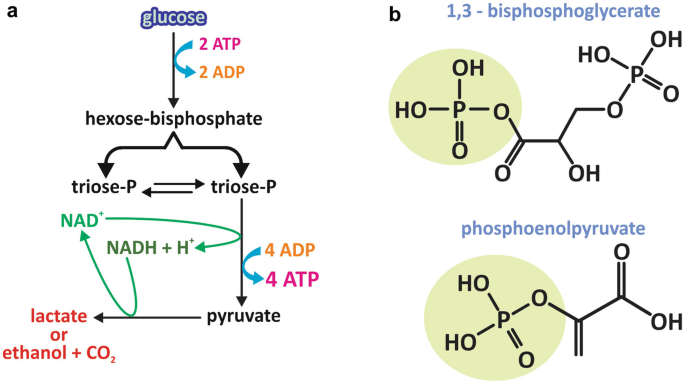

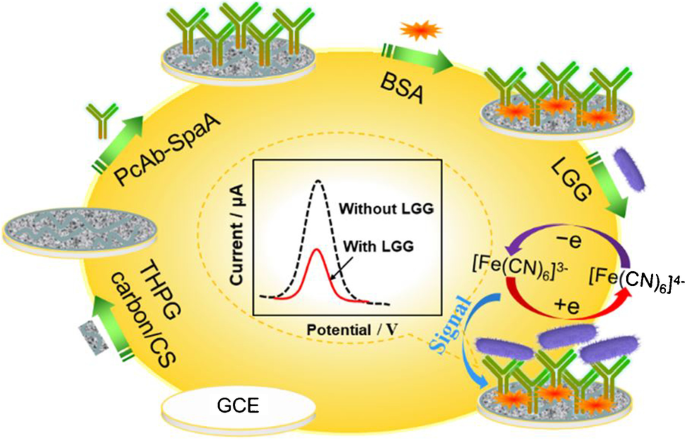







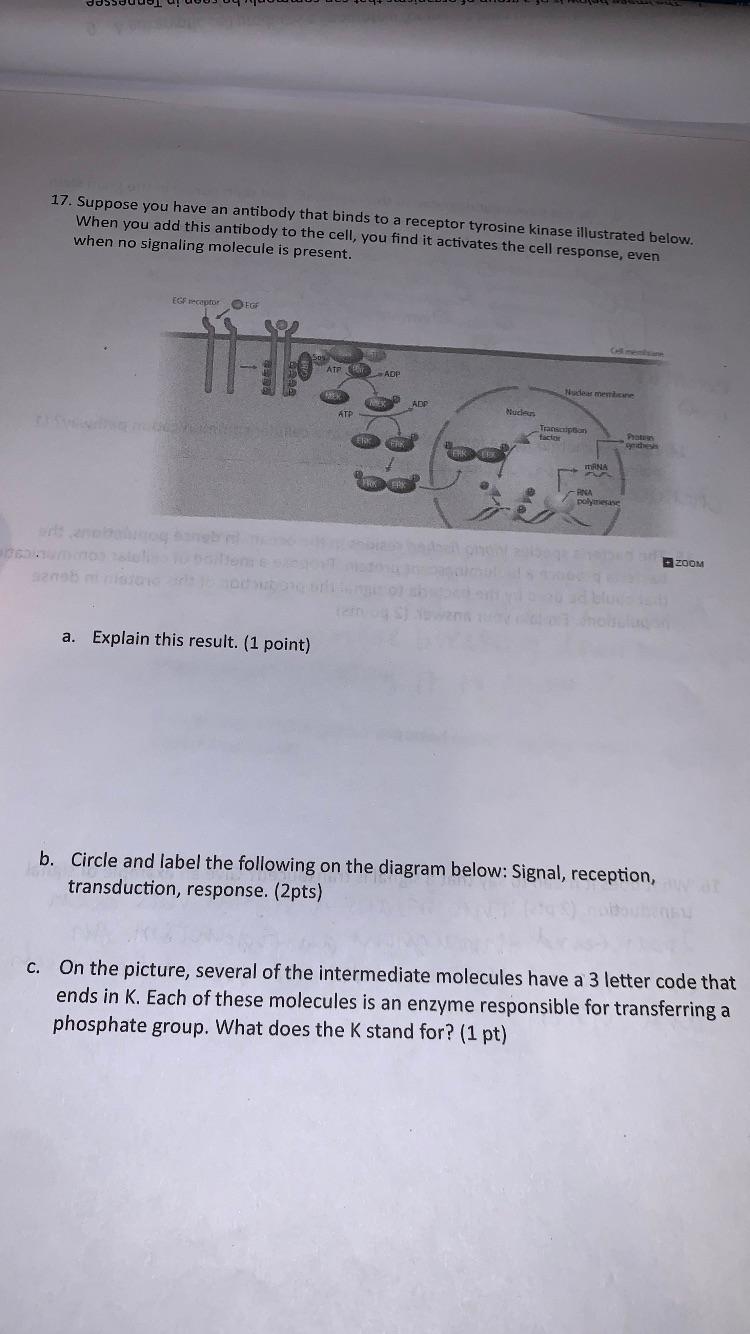







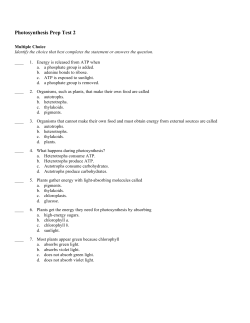


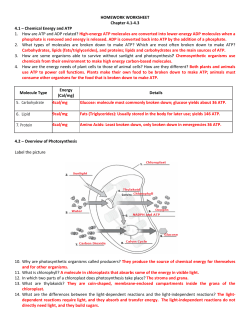
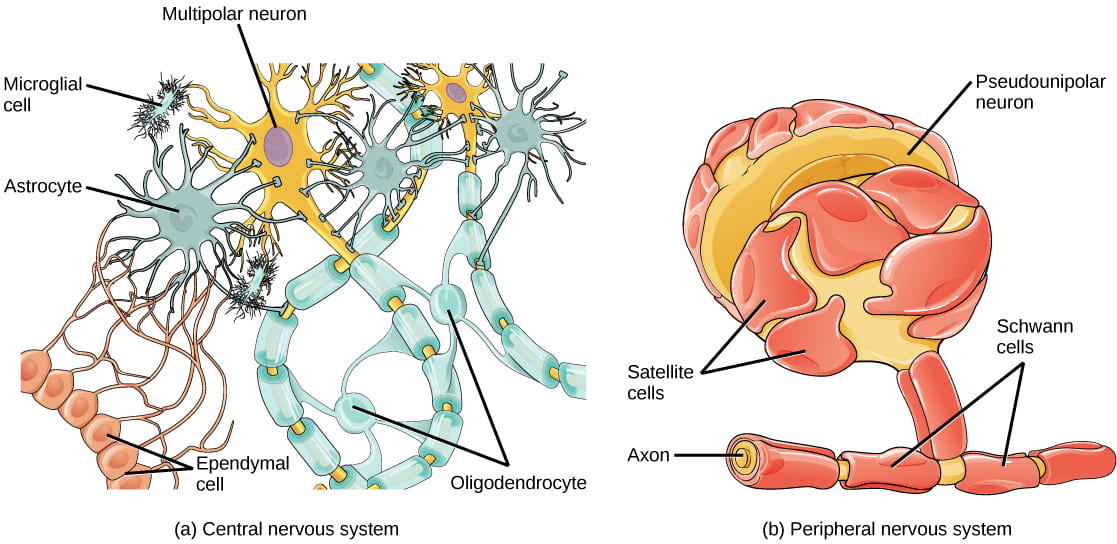













Post a Comment for "45 label each part of the atp molecule illustrated below."